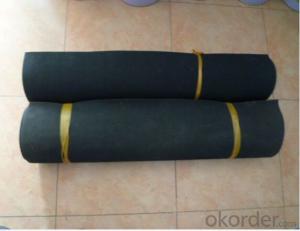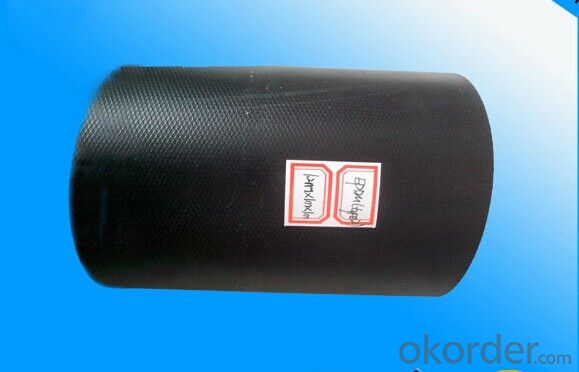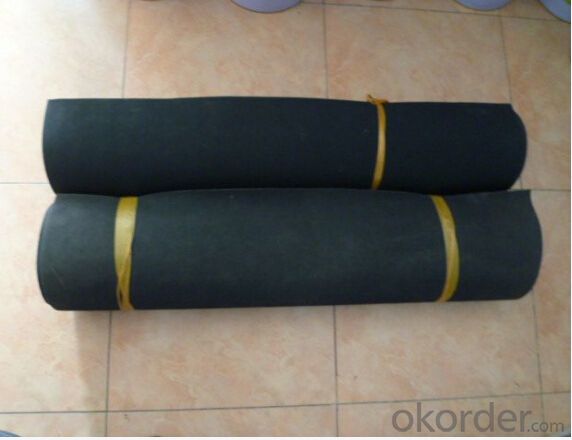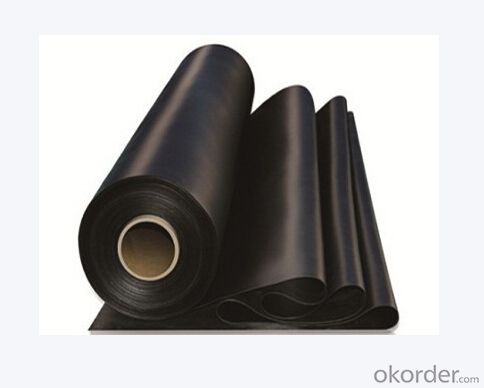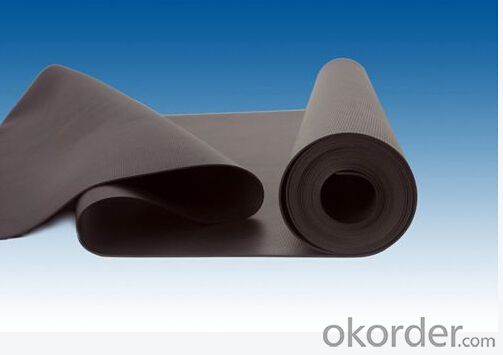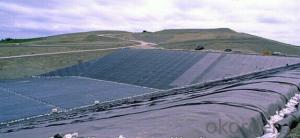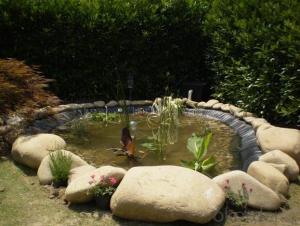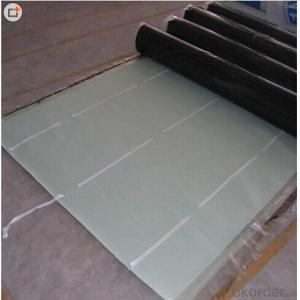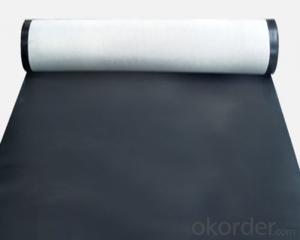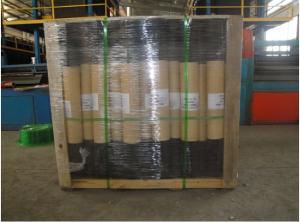EPDM Rubber Roof Waterproof Membrane with High Quality
- Loading Port:
- Qingdao
- Payment Terms:
- TT OR LC
- Min Order Qty:
- 2000 m²
- Supply Capability:
- 10000 m²/month
OKorder Service Pledge
OKorder Financial Service
You Might Also Like
Epdm Rubber Roof in Rolls Membrane
Characteristics:
Good synthesis aging resistance;ozone resistacne;ultravoilet resistance;chemical resistance;corrosion resistance.High tensile strength and good elasticity;endured the puncture-resistant and cracking resistance.
Specification:
With: 1m-4m
Length: 20m
Thickness:1.2mm;1.5mm;2mm
Packing:
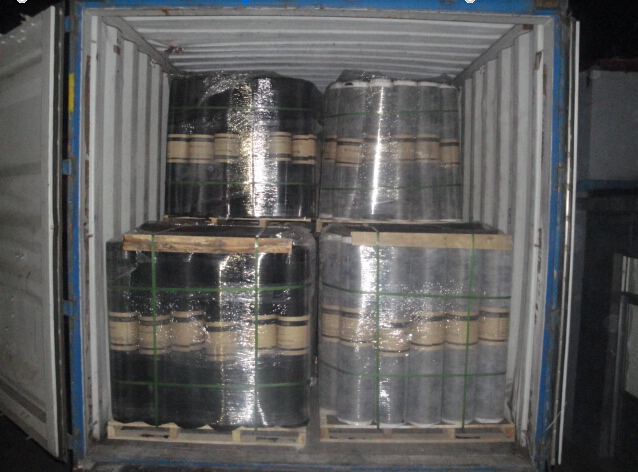
Technical Data:
Technical Capacity Index(Ref to Chinese Standard GB18173.1-2006) | ||
EPDM Rubber Waterproof Membrane | ||
No. | Item | Index |
1
|
Water tightness |
≥0.3 Mpa,No leakage
|
2 | Tensile strength | ≥7.5Mpa |
3 | Elongation at break% | ≥450 |
4 | Tearing strength,KG/m | ≥25 |
5 | Brittleness point | ≤-40 |
Application
Widely used in roofs, basement, toilet ,swimming pool, and all kinds of industry and civil building waterproofing, reservoir, vivicism, bridge, underground, tunnel and dam waterproofing ,especially to the keystone waterproofing projects which is durability, high corrosion resistance and easy deformation
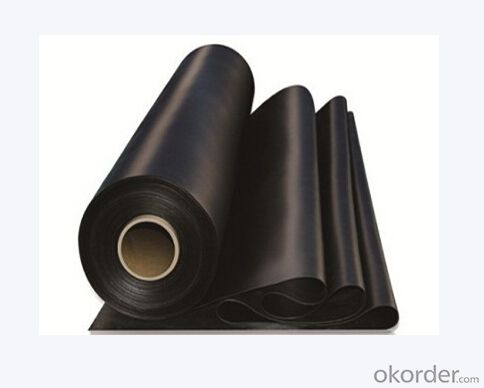
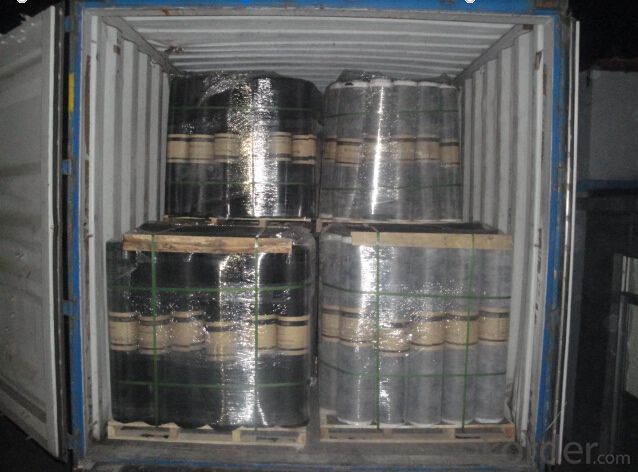
- Q: Can a waterproofing membrane be pre-fabricated or pre-made for easy installation?
- Indeed, there are pre-fabricated or pre-made waterproofing membranes available for easy installation. Many manufacturers offer these membranes specifically designed to simplify the installation process. These membranes are usually manufactured in controlled factory conditions to ensure consistent quality and reduce the potential for errors during installation. Pre-fabricated waterproofing membranes are made from different materials, such as bitumen, PVC, EPDM, or TPO, and are available in various forms, including sheets or rolls. They are designed for easy transportation and on-site installation. The use of pre-fabricated waterproofing membranes brings several advantages, including increased efficiency, reduced labor costs, and improved installation quality. Contractors can save time and resources by eliminating the need for on-site fabrication. Additionally, pre-made membranes often come with detailed installation instructions, making it easier for contractors to ensure proper installation. Furthermore, pre-fabricated waterproofing membranes can be customized to meet specific project requirements, such as size, shape, or slope. This customization ensures a seamless and effective waterproofing solution. Overall, the use of pre-fabricated or pre-made waterproofing membranes can simplify the installation process significantly and provide a reliable and durable waterproofing solution for various applications, such as roofs, basements, and foundations.
- Q: Does a waterproofing membrane provide any insulating properties?
- No, a waterproofing membrane does not provide any insulating properties. The primary function of a waterproofing membrane is to prevent the ingress of water or moisture into a structure, such as a building or a roof. It acts as a barrier to keep water out and protect the underlying materials from damage. Insulation, on the other hand, is a material or layer that is designed to reduce the transfer of heat, sound, or electricity. While both waterproofing and insulation are important for maintaining the integrity and functionality of a structure, they serve different purposes and should not be confused with one another.
- Q: Can a waterproofing membrane be used on roofs with slope?
- Yes, a waterproofing membrane can be used on roofs with slope. In fact, it is commonly used on sloped roofs to provide an additional layer of protection against water intrusion. The membrane is typically installed beneath the roofing materials and acts as a barrier to prevent water from seeping into the roof structure. This is especially important on sloped roofs where water runoff is more rapid and can potentially result in leaks or damage. The waterproofing membrane is designed to be flexible and can accommodate the slope of the roof without compromising its effectiveness. Additionally, the membrane can also help to improve the overall durability and lifespan of the roof by preventing moisture-related issues such as rot or mold growth.
- Q: Can a waterproofing membrane be used on steel surfaces?
- Indeed, steel surfaces can benefit from the application of a waterproofing membrane. These membranes are specifically designed to establish a shield against moisture and water incursion, and they possess the versatility to be utilized on a range of surfaces, including steel. Construction endeavors, including roofs, balconies, and foundations, frequently feature steel surfaces. By employing a waterproofing membrane on these steel surfaces, one can effectively thwart corrosion and harm arising from water contact. It is crucial to carefully choose a waterproofing membrane that suits steel surfaces, while also adhering to correct surface preparation and application techniques to attain maximum performance and longevity.
- Q: Can waterproofing membranes be used on concrete stairs?
- Yes, waterproofing membranes can be used on concrete stairs. These membranes are designed to create a protective barrier against water penetration, which is particularly important for areas exposed to moisture such as outdoor or basement stairs. Applying a waterproofing membrane on concrete stairs can help prevent water damage, increase their durability, and extend their lifespan.
- Q: Can a waterproofing membrane be used for loading docks or ramps?
- Certainly! A waterproofing membrane proves useful for loading docks and ramps. Its purpose lies in safeguarding surfaces against water damage by forming a barrier that halts the intrusion of water. As loading docks and ramps remain exposed to diverse weather conditions, they often fall victim to water seepage, leading to gradual harm. By applying a waterproofing membrane to these areas, one can avert water infiltration, thus shielding the structure and extending its lifespan. Furthermore, this membrane offers supplementary advantages like enhanced slip resistance, defense against chemical spills, and decreased maintenance expenses.
- Q: Can a waterproofing membrane be used in areas with heavy foot traffic or vehicle loadings?
- Yes, a waterproofing membrane can be used in areas with heavy foot traffic or vehicle loadings. However, it is important to choose a membrane that is specifically designed for such applications to ensure durability and longevity. These specialized membranes are typically thicker and more resistant to wear and tear. Additionally, consideration should be given to the type of traffic or loading that the area will experience. For example, areas with vehicular traffic may require a membrane with higher compressive strength to withstand the weight of vehicles. In summary, while waterproofing membranes can be used in high-traffic or heavy loading areas, it is crucial to select the appropriate type of membrane that meets the specific demands of the application.
- Q: Can a waterproofing membrane be used for a retaining wall drainage?
- Using a waterproofing membrane is an effective method for retaining wall drainage. Typically used to prevent water from penetrating structures like basements or foundations, this membrane can also serve as a barrier against water seepage in retaining wall construction. Retaining walls are designed to hold back soil and prevent erosion, but without proper construction, they can be vulnerable to water damage. If water seeps through, it can create pressure behind the wall, causing structural problems over time. By installing a waterproofing membrane on the backside of the retaining wall, water infiltration into the soil and accumulation behind the wall can be prevented. Furthermore, a waterproofing membrane can help with the drainage of water away from the retaining wall. By incorporating drainage systems like weep holes or French drains, alongside the membrane, water can be directed away from the wall, reducing hydrostatic pressure and potential damage. It's important to note that while a waterproofing membrane can be used for retaining wall drainage, proper installation and compatibility with the specific retaining wall system and conditions are crucial. It's recommended to consult with a professional engineer or contractor experienced in retaining wall construction to ensure the most suitable approach for your specific project.
- Q: Can a waterproofing membrane be used on precast wood surfaces?
- Yes, a waterproofing membrane can be used on precast wood surfaces. Waterproofing membranes are commonly used to protect various types of surfaces, including wood, from water damage. These membranes are designed to create a barrier that prevents water from seeping through and causing structural issues or rot in the wood. By applying a waterproofing membrane to precast wood surfaces, you can effectively protect the wood from moisture and prolong its lifespan. However, it is important to ensure that the membrane is compatible with wood and follow the manufacturer's guidelines for application to achieve the best results.
- Q: Can a waterproofing membrane be used for a garden pond liner?
- Certainly! A garden pond liner can be made using a waterproofing membrane. The primary purpose of a waterproofing membrane is to stop water from seeping through it, which makes it a great option for constructing a garden pond with a tight seal. By using a waterproofing membrane, leaks can be effectively prevented, guaranteeing that the water remains within the pond. Moreover, waterproofing membranes are generally long-lasting and can withstand UV rays, chemicals, and punctures, all of which are essential considerations when choosing a material for a pond liner. Nonetheless, it is vital to ensure that the selected waterproofing membrane is specifically designed for pond use and is safe for aquatic life.
Send your message to us
EPDM Rubber Roof Waterproof Membrane with High Quality
- Loading Port:
- Qingdao
- Payment Terms:
- TT OR LC
- Min Order Qty:
- 2000 m²
- Supply Capability:
- 10000 m²/month
OKorder Service Pledge
OKorder Financial Service
Similar products
Hot products
Hot Searches
Related keywords

